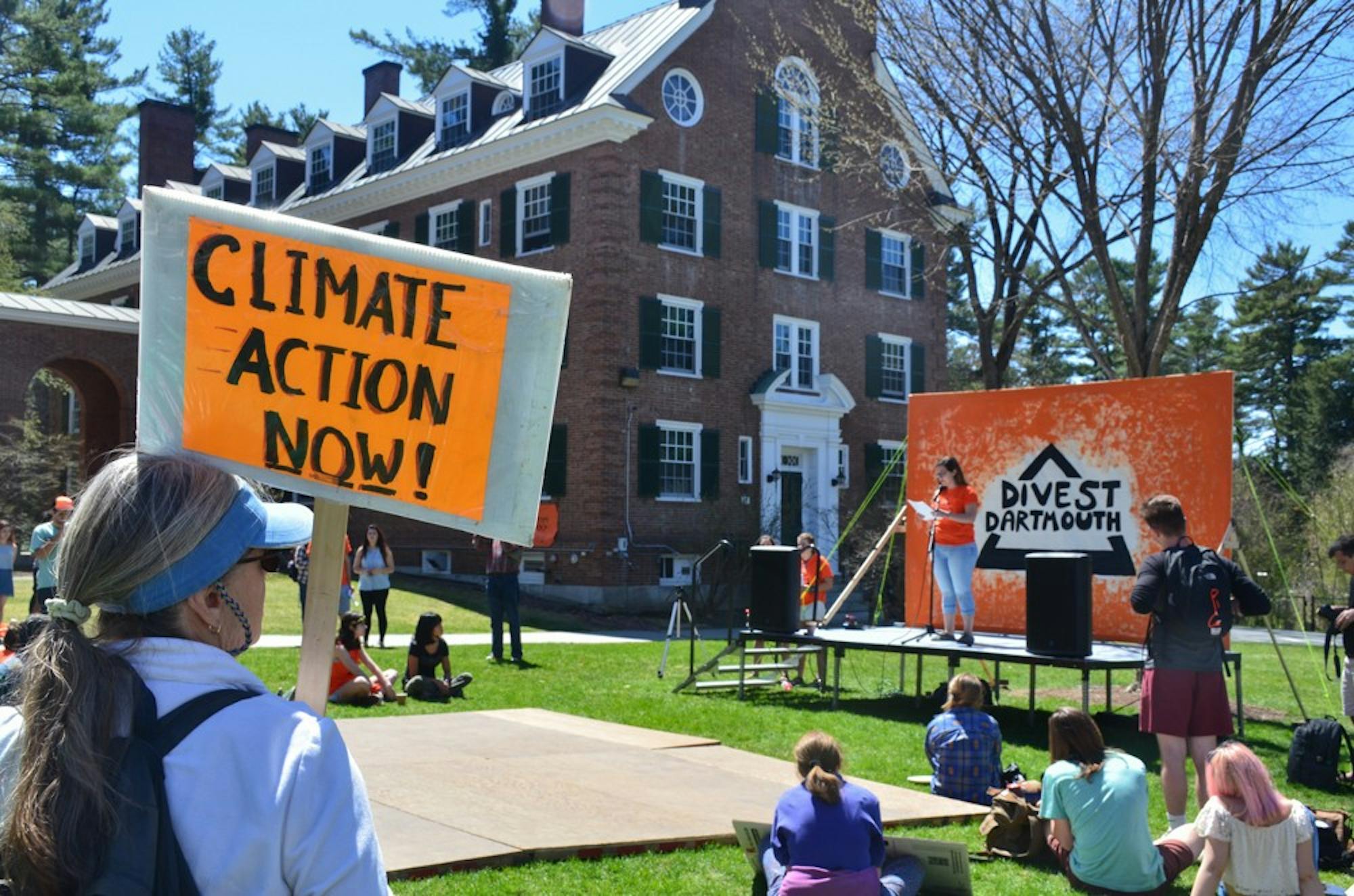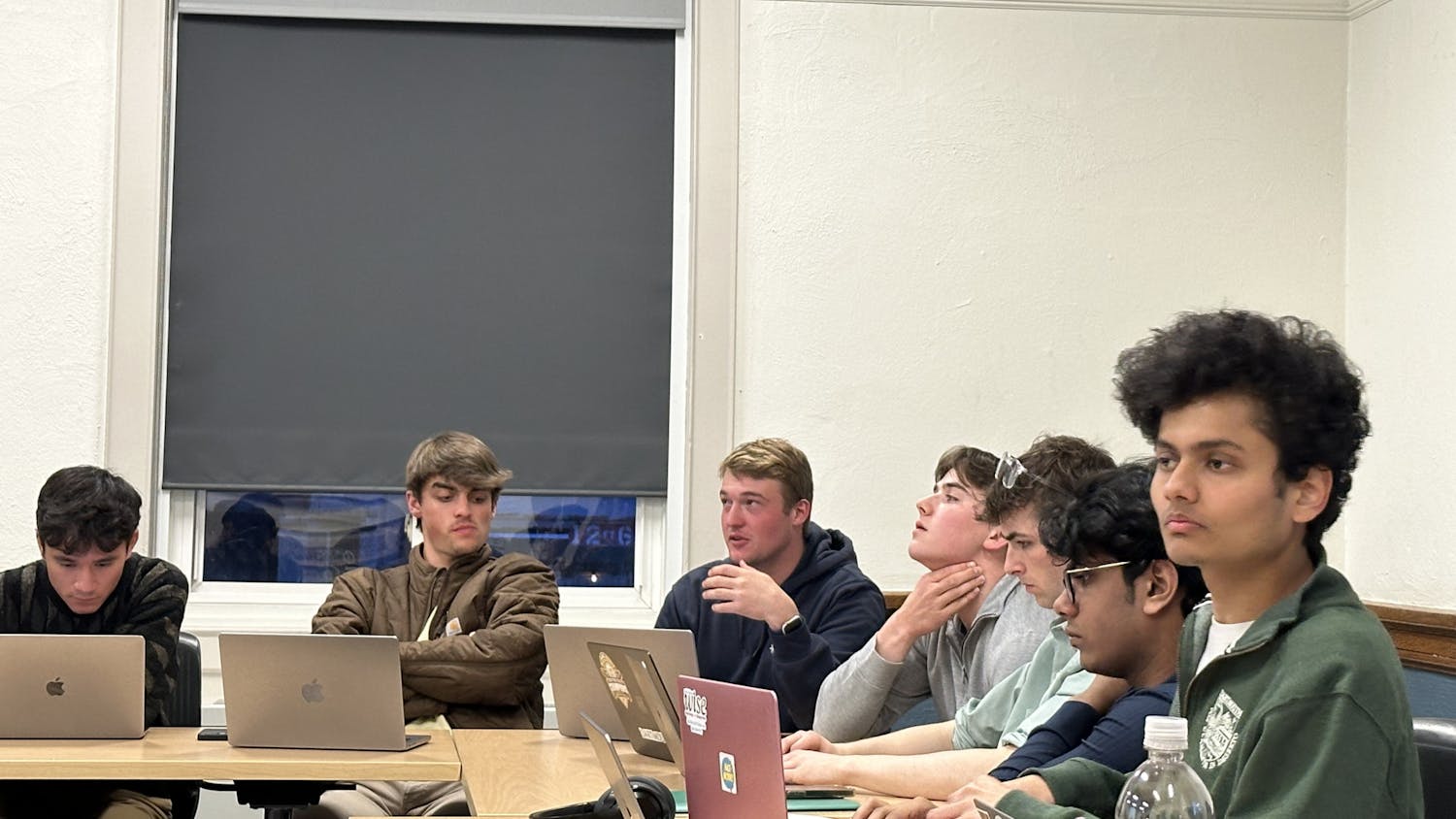The College released its report on fossil fuel divestment on May 13. The report details rationales for and against divesting from fossil fuel companies, examining arguments from ethical, financial, academic and symbolic viewpoints.
College President Phil Hanlon commissioned the report from the Advisory Committee on Investor Responsibility in 2014, after the Divest Dartmouth activist group submitted a petition that requested that the College divest from fossil fuel companies. Work on the report began last summer, when students Katie Zhang ’16 and Kasidet Trerayapiwat Th’16 began research into the possible financial and social impacts of divestment. Thayer School of Engineering professor Mark Borsuk, who served as their advisor, began work in the fall to combine their findings into a single document. The final report was finished in April.
Zhang said she and Trerayapiwat spoke with approximately 10 to 12 students, faculty members and staff while researching for the report.
The report examines four possible levels of divestment: no divestment; divesting from the “Filthy Fifteen,” the 15 largest and most polluting coal companies in the United States; divesting from the “Carbon Underground 200,” the largest 100 public coal and the 100 largest public oil and gas reserve owners based on their potential for carbon dioxide emissions; or divesting entirely from all companies with holdings or operations in coal, oil or gas or corporations which heavily consume these fuel sources. Divest Dartmouth advocates divesting from the Carbon Underground 200.
The report also looks into different options for reinvesting the divested funds, such as integrating them into existing holdings, investing in other competitive funds to maintain diversity or investing in clean energy initiatives. In addition, it clarifies that it is only looking at divesting from direct holdings that the College holds in its own name — divesting from indirect holdings such as mutual funds would impose an unrealistic financial burden on the College, it says.
Based on this, the report proposes four options for divestment as sample possibilities, though it notes that other combinations also exist. Option A would be no divestment, Option B would be divesting from the Filthy Fifteen and investing in diverse funds, Option C would be divesting from the Carbon Underground 200 and investing in diverse funds and Option D would be divesting comprehensively and investing the funds into clean energy.
Next, the report looks at the potential consequences divestment would have along a variety of scales. It identifies four broad objectives for a successful divestment: fulfilling the College’s ethical responsibility, minimizing financial impacts, promoting the College’s academic mission and making a symbolic statement. Each of these categories was further subdivided into goals such as affecting social change, positively impacting donor relations and attracting people to the College.
The different options were then evaluated under each of these scales, ranked from having a “greatly diminished” to a “greatly increased” impact on each measure. Some options were also considered to have an “uncertain” impact.
Overall, Option A did the worst, with an “unchanged” rating in all categories save for “promote vigorous and open debate of ideas,” “attract and retain students, faculty and staff” and “maintain positive relations with alumni,” where it received “slightly diminished” ratings. The report attributed this to a shift in campus climate due to activism in recent years, where campus members have increased their demands for sustainability and divestment.
The outcomes from the other categories were less clear-cut. Option B was “unchanged” in all categories save for those under the broad “Ethical Responsibility” objective, where the outcomes were “slightly enhanced.”
Option C was either “enhanced,” “slightly enhanced” or “unchanged” in all categories save for “positively impact donor contributions,” where it received an “uncertain” rating.
Option D “enhanced” or “greatly enhanced” the categories under the “Ethical Responsibility” objective, and “slightly enhanced” all others, save for “maximize return on investment,” which was “slightly diminished,” and “positively impact donor contributions” and “maintain positive relations with alumni,” which were “uncertain.” The report emphasized the importance of having the College speak more with alumni to see what impact different levels of divestment would have on their feelings and donations.
An appendix to the document showed how changing the weighting of different categories, such as ethical duties or financial impacts, could lead to different outcomes depending on the College’s priorities. Assigning points to each option based on its rating in each category, the report argued that under a balanced weighting Option D would be the best option even in the worst-case scenario, where all of the “uncertain” ratings were assumed to be “slightly diminished.” However, it also noted that Option B did the best job of balancing different priorities without sacrificing any.
With extra weight given to the financial category, Options B, C and D all did equally well under the worst-case scenario, while Option D did the best in the best-case scenario. Options B and C were both considered more balanced in the best-case scenario. With extra weight given to the ethical category, Option D did best in all scenarios, though Options B and C were still more balanced options.
Borsuk emphasized the importance of deciding what objectives to value when interpreting the report’s results. Depending on what the College chooses to emphasize, different options might be more or less attractive for them, he said.
“What I hope that the report can do is initiate a dialogue around these issues and make it more transparent maybe than it would otherwise be,” he said.
Zhang agreed with this, saying that value decisions would have to rely on what the College chooses to prioritize. She did note that the report seems to suggest that increased divestment would benefit the College.
Julian Heninger ’17, a member of Divest Dartmouth, said he supported how the report looked at divestment from multiple angles. While many have viewed Divest Dartmouth as a primarily ethics-based movement before now, he thinks the report will also allow them to see other possible benefits for divestment.
In terms of the different options presented, Heninger said that while Option B would be a step in the right direction and a positive impact overall, it would not be enough.
“[Option] B would be a partial victory, but it would be by no means the final one,” he said.
In addition to the first report, the College also released a short document detailing pros and cons of divestment, listing four pros and seven cons. Not all of the first report’s arguments are included, and several arguments that were not included in the first report are also listed.
Borsuk said he is not sure why the document was written, noting that compared to the report, it seemed “cursory” and did not cite any sources.
Heninger said that during a meeting with Hanlon during his office hours, Hanlon told Heninger that there were concerns the first report contained bias in favor of divestment. For a period of three weeks, Heninger was not sure if the report would be released, he said.
Borsuk was invited to give a presentation about the report by Divest Dartmouth tomorrow evening at 8 p.m.




